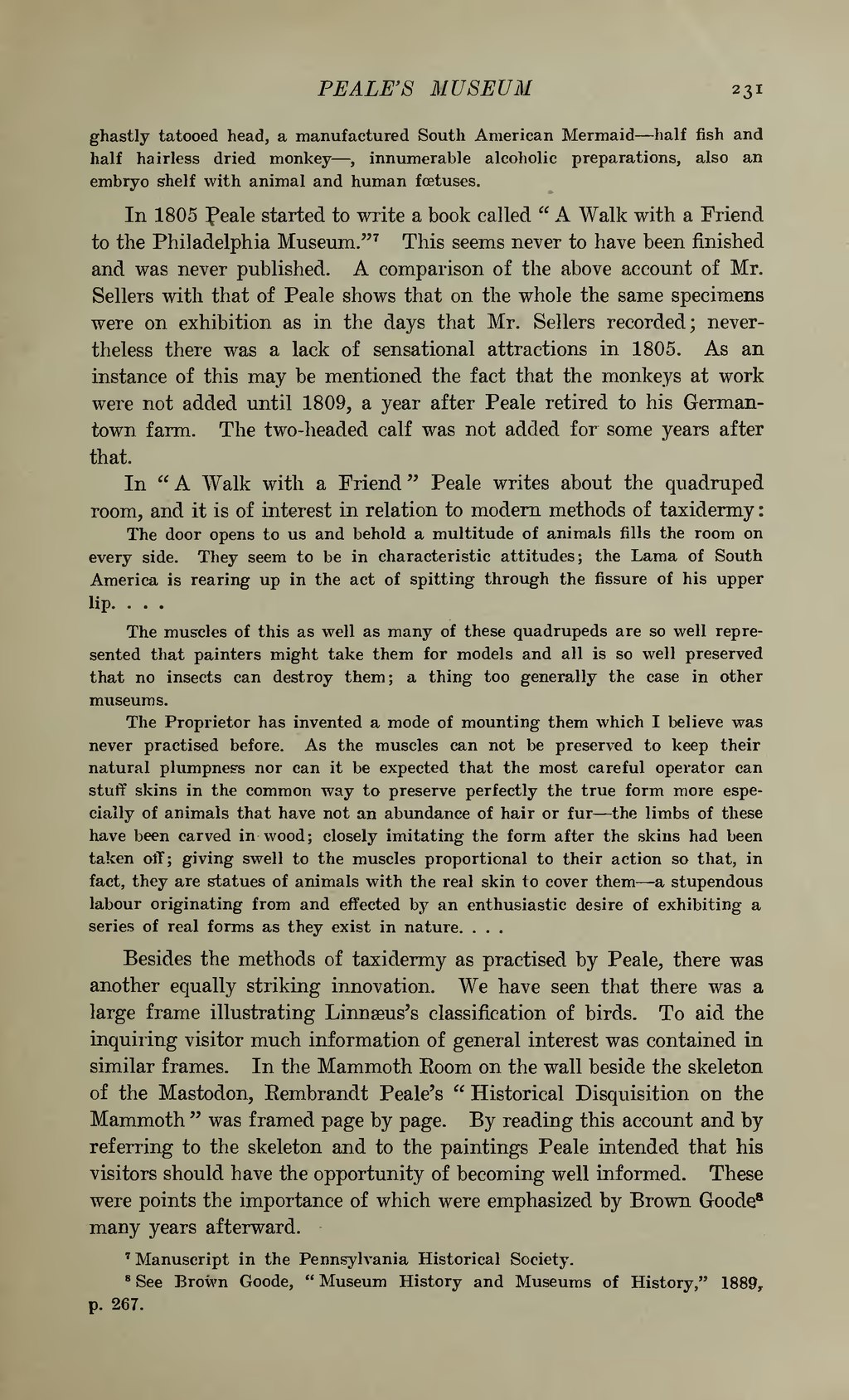In 1805 Peale started to write a book called "A Walk with a Friend to the Philadelphia Museum."[1] This seems never to have been finished and was never published. A comparison of the above account of Mr. Sellers with that of Peale shows that on the whole the same specimens were on exhibition as in the days that Mr. Sellers recorded; nevertheless there was a lack of sensational attractions in 1805. As an instance of this may be mentioned the fact that the monkeys at work were not added until 1809, a year after Peale retired to his Germantown farm. The two-headed calf was not added for some years after that.
In "A Walk with a Friend" Peale writes about the quadruped room, and it is of interest in relation to modern methods of taxidermy:
The door opens to us and behold a multitude of animals fills the room on every side. They seem to be in characteristic attitudes; the Lama of South America is rearing up in the act of spitting through the fissure of his upper lip. . . .
The muscles of this as well as many of these quadrupeds are so well represented that painters might take them for models and all is so well preserved that no insects can destroy them; a thing too generally the case in other museums.
The Proprietor has invented a mode of mounting them which I believe was never practised before. As the muscles can not be preserved to keep their natural plumpness nor can it be expected that the most careful operator can stuff skins in the common way to preserve perfectly the true form more especially of animals that have not an abundance of hair or fur—the limbs of these have been carved in wood; closely imitating the form after the skins had been taken off; giving swell to the muscles proportional to their action so that, in fact, they are statues of animals with the real skin to cover them—a stupendous labour originating from and effected by an enthusiastic desire of exhibiting a series of real forms as they exist in nature. . . .
Besides the methods of taxidermy as practised by Peale, there was another equally striking innovation. We have seen that there was a large frame illustrating Linnaeus's classification of birds. To aid the inquiring visitor much information of general interest was contained in similar frames. In the Mammoth Room on the wall beside the skeleton of the Mastodon, Rembrandt Peale's "Historical Disquisition on the Mammoth" was framed page by page. By reading this account and by referring to the skeleton and to the paintings Peale intended that his visitors should have the opportunity of becoming well informed. These were points the importance ©f which were emphasized by Brown Goode[2] many years afterward.
